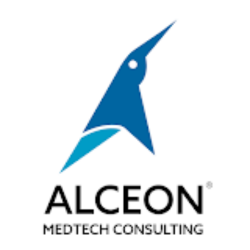
Entering China’s Booming Healthcare Market:
Regulatory Roadmap and the Challenges.

Why CHINA?
China’s $170 billion Medical Device market (projected by 2025) offers strong growth potential due to:
- Aging population (200M+ aged 65+ by 2030) and rising chronic diseases.
- Government initiatives (eg, Healthy China 2030) are boosting rural healthcare and digital health.
Entering China’s booming healthcare market presents tremendous opportunities, but navigating regulatory hurdles is essential for success.
In this post, we’ll discuss the latest requirements, exemptions, best practices and challenges for registering and importing medical devices into China.
1. The Regulatory Authority: NMPA
The National Medical Products Administration (NMPA) is the Chinese government agency regulating medical devices, pharmaceuticals, and cosmetics. The authority evaluates and approves medical devices for market access in China.
Any foreign or domestic company intending to sell medical devices in China must comply with NMPA regulations and obtain the appropriate Medical Device Registration Certificate (MDRC) .
2. Classification of Medical Devices
China classifies medical devices into three categories based on risk:
- Class I: Low risk – Subject to filing
- Class II: Moderate risk – Requires product testing and technical review
- Class III: High risk – Requires clinical trials (unless exempt), product testing, and comprehensive review.
- For Class II and III devices, the reports must be issued by NMPA-authorized test labs
The classification impacts the type of documentation and procedures required for registration.
3. Key Registration Requirements
To register a medical device in China, companies must submit the following core documentation:
- Product Inspection Report : This must be conducted by a testing center accredited by the NMPA.
- Product Technical Requirements (PTRs) : Technical standards the product must meet.
- Risk Analysis Report
- Clinical Evaluation Report (CER) : Required unless exempt (see below).
- Labeling and Instructions for Use (IFU)
- Quality Management System (QMS) documentation
4. Clinical Evaluation Exemptions
China allows clinical evaluation exemptions for specific Medical Device , particularly:
- Devices with well-established clinical use.
- Devices that are substantially equivalent to already-approved products.
- Products included in the NMPA’s exemption catalog
Applicants must demonstrate substantial equivalence or provide literature data and clinical experience from other markets.
5. Special Pathways for Imported Innovative Devices
To encourage innovation, China offers expedited registration pathways for:
- Imported Innovative Medical Devices
- Breakthrough Devices
- Devices addressing unmet clinical needs
These programs can significantly shorten the approval timeline. However, companies must submit a strong justification for innovation and demonstrate the product’s clinical value.
6. Marketing Authorization Holder (MAH) System

China has fully implemented the Marketing Authorization Holder (MAH) system, which allows:
- Companies without manufacturing capacity in China to register products.
- Legal entities to hold the registration certificate while outsourcing manufacturing.
This provides more flexibility for foreign manufacturers and startups seeking to enter the Chinese market.
7. Online Sales Reporting Obligations
With the growth of e-commerce and digital health in China, Medical Device companies selling online must:
- File with local authorities before engaging in online sales.
- Report their online business activities.
- Ensure traceability and compliance with e-commerce regulations.
Failure to comply can lead to purposes, product delisting, or revocation of licenses.
Challenges
1. Regulatory Hurdles
- NMPA approval process: Complex, lengthy (12-24 months), and costly
- Clinical testing requirements: Must be conducted in Chinese labs, adding time and expense.
- Local representation needed: Foreign firms must appoint a Chinese agent for registration
2. Language & Documentation Barriers
- All submissions (technical files, labeling, manuals) must be in Mandarin.
- Miscommunication risks in negotiations with regulators, distributors, and hospitals.
3. Cultural & Business Practices
- Guanxi (关系) matters: Strong local partnerships (distributors, hospitals) are crucial.
- Price sensitivity: Domestic manufacturers (Examples – Mindray, MicroPort) dominate with lower-cost alternatives.
- Tendering processes: Favor local players; Foreign firms must adapt pricing strategies.
4. Testing & Certification Delays
- Local clinical trials: These are required for most Class II/III devices and are conducted at NMPA-approved sites.
- Differences in standards: Chinese testing protocols may not align with EU/US norms, requiring design adjustments.
5. Market Competition & Localization
- Domestic dominance: Chinese firms control ~70% of the mid-to-low-end market.
- IP risks: Counterfeiting and patent infringement concerns.
- Local manufacturing advantage: Some provinces incentivize domestic production over imports



